By tourist on April 27, 2015
Évora, Religious tourism
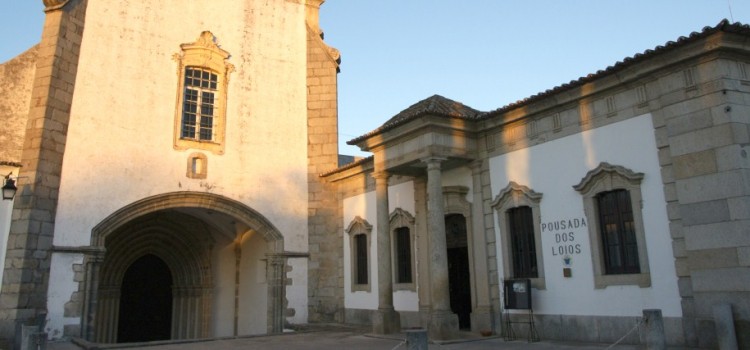
The Lóios Convent, also known as the Convent of St. John the Evangelist was built in the fifteenth century on the remains of a medieval castle, having been severely damaged during the 1755 earthquake. It is a set of rectangular shape that develops around a cloister of two floors, the ground floor of Gothic-Manueline style […]
By tourist on April 27, 2015
Évora, Go, See
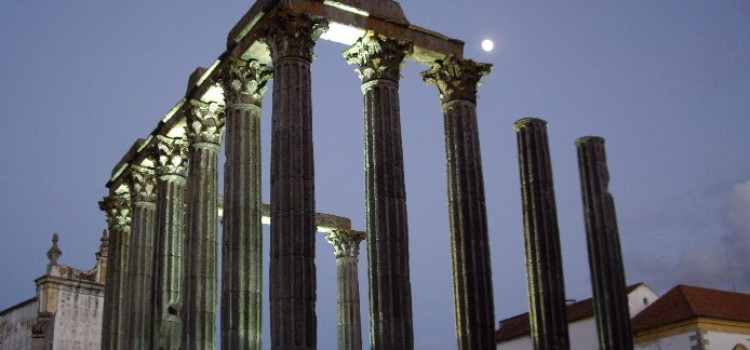
The Roman Temple of Évora is located in the town of Evora, Portugal; is part of the historic city center, which was classified as World Heritage by UNESCO. The Roman Temple is a National Monument. One of the most famous landmarks of the city, and a symbol of Roman presence in Portuguese territory. Located in […]
By tourist on April 27, 2015
Évora, Go, Religious tourism, Sacred Travel, See, Slider
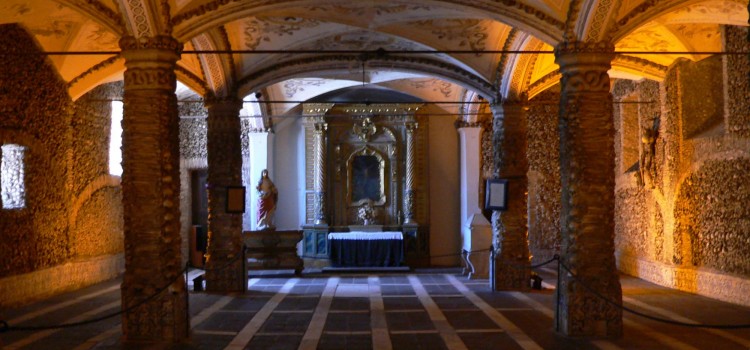
The Chapel of Bones is one of the most popular monuments in Évora, Portugal. It is located in the Church of San Francisco – Igreja de São Francisco. It was built in the seventeenth century by initiative of three monks who, in the spirit of the time (religious counter-reform, according to the regulations of the […]
By tourist on April 27, 2015
Évora, Museums, Religious tourism
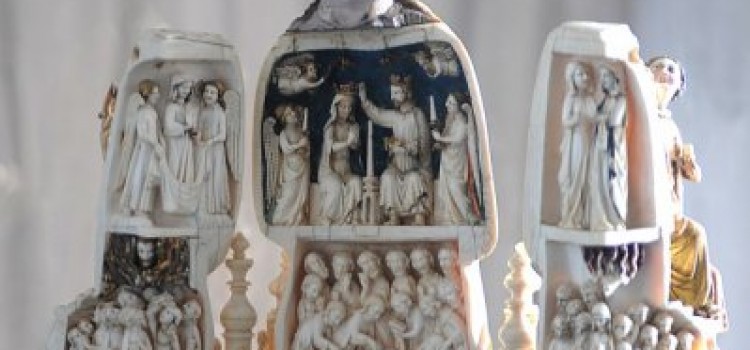
Exhibits in the cathedral museum include: the sceptre of Cardinal-King Henrique, a 16th-century goldsmith work in Manueline style a puzzle-like, 12-inch-high Gothic ivory statue of Mary, whose midriff opens up into a triptych with nine scenes of her life. It’s a French work of art from the 13th century. The head of the statue is a replica from […]
By tourist on April 27, 2015
Évora, Religious tourism
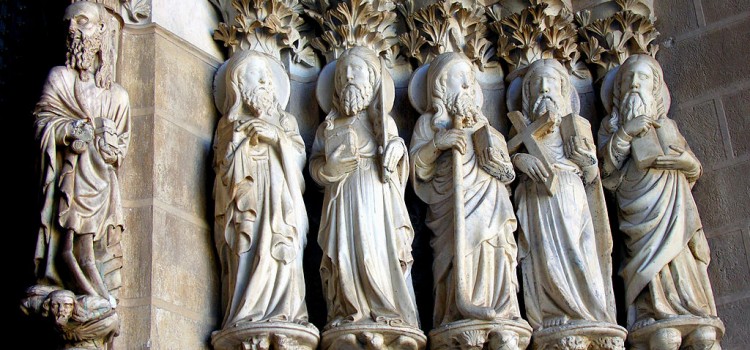
The Cathedral Exterior The main façade of Évora Cathedral, built with rose granite, resembles that of Lisbon Cathedral. Its two massive towers, completed in the 16th century, flank a narthex (entrance gallery), which encloses the main portal. Over the narthex there is a huge window with Gothic tracery that illuminates the interior. Each tower has […]
By tourist on April 27, 2015
Évora, Religious tourism, Slider

Évora was definitively reconquered from Arab hands in 1166 by Geraldo Sem Pavor (Gerald the Fearless), and soon afterwards the new Christian rulers of the city began to build a cathedral, dedicated to the Virgin Mary. This first building, built between 1184 and 1204, was very modest and was enlarged circa 1280-1340, this time in early Gothic style. The cathedral received several valuable additions through time, […]
By tourist on April 27, 2015
Évora, Heritage tourism, Slider

The origins of Évora come from a distant past, prior even to the Romanization. However, it is after the reconquest that witnessed the growth in urban and monumental terms, which will lead, in the transition of the century. XVI, to be consider the 2nd city in the country, almost permanent residence of the court and beloved […]
By tourist on April 27, 2015
viewpoint
Évora, Go, See, Slider
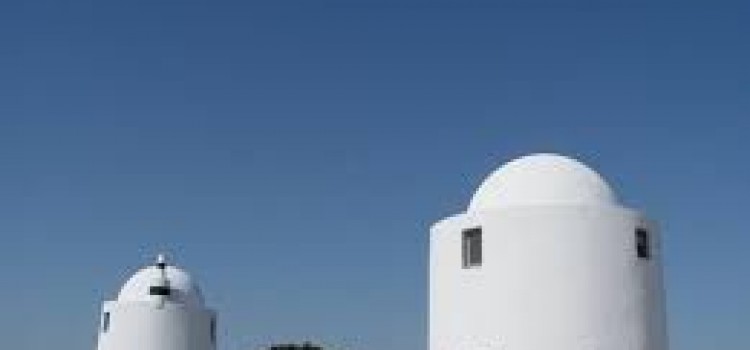
This hill is one of the main sights of the city of Évora; on site, was implemented one of the oldest prehistoric villages. The Educational Project of Alto de São Bento (St. Benedict Hill), which includes the Museum Centre of Granite and the Museum Centre of Floristic.
By tourist on April 27, 2015
Évora, Heritage tourism
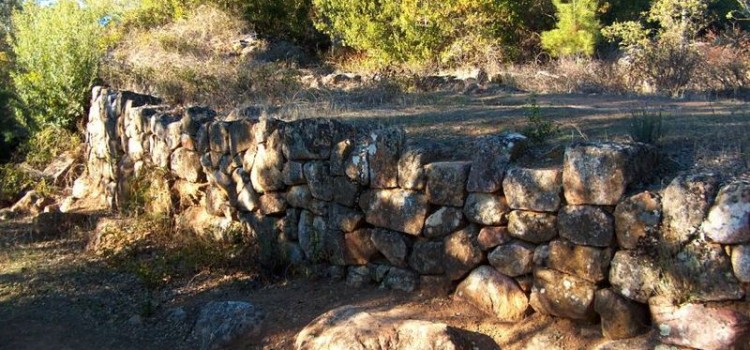
The so-called Giraldo Castle is located in the parish of Our Lady of Guadalupe, in the municipality of Évora, Évora District, Portugal. The Castle of Giraldo is one of the few villages in the Alentejo known that confirmed an almost continuous occupation since the third by the end of the first millennium BC, with sporadic […]
By tourist on April 27, 2015
Archaeological tourism, Évora
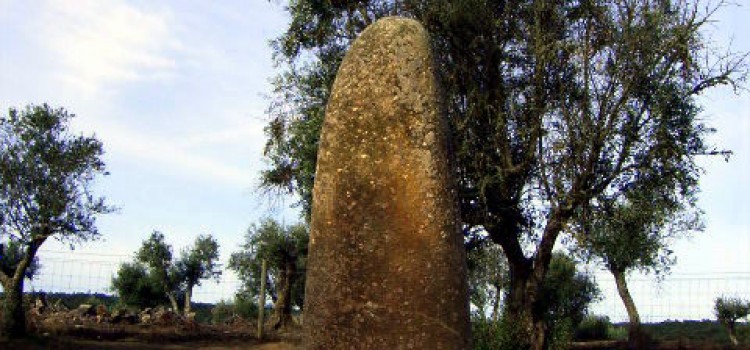
Great menhir isolated, spatially related to the cromlech of Almendres. The Menhir Monte Almendres of Neolithic origin and about six thousand years is a great menhir isolated which is situated about two kilometers from Almendres Cromlech. The menhir, like the cromlech, located in Évora, in the Alentejo. The menhir, granite and about three feet tall, weighs […]












